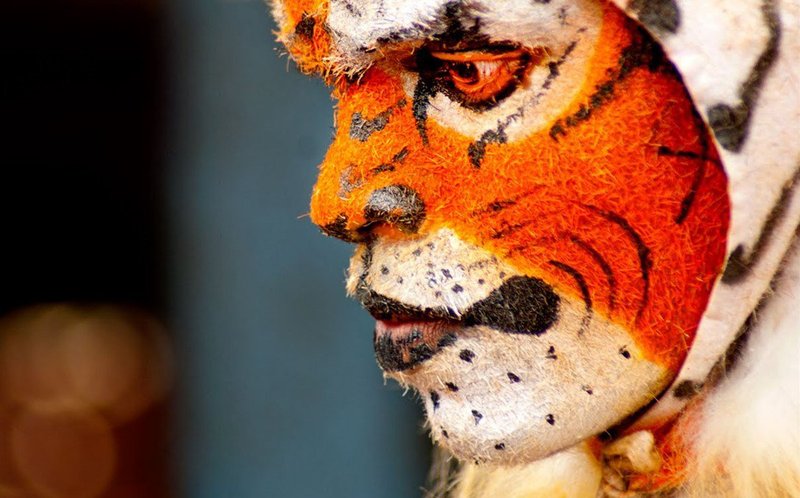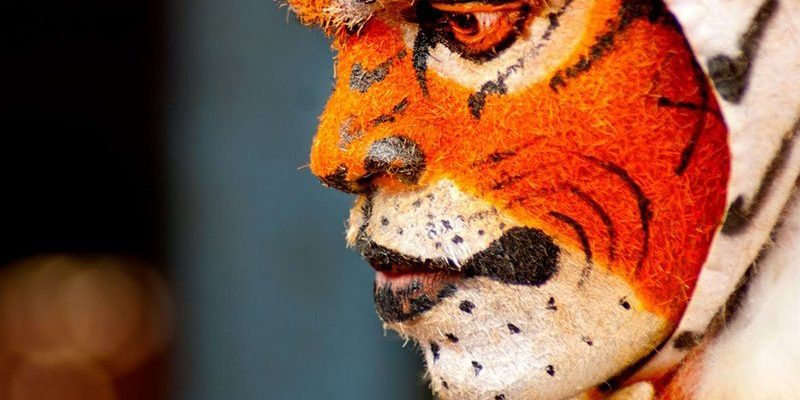
You might be surprised at the sheer diversity of tiger representations. In some cultures, they’re seen as symbols of power and strength, while in others, they take on more mystical roles, often linked to spiritual beliefs. So, grab your favorite drink, and let’s unravel this captivating story of the tiger in culture and folklore.
The Tiger in Asian Mythology
Tigers have been a significant part of Asian mythology for centuries. In countries like China and India, they are often revered as powerful guardians. For instance, in Chinese culture, the tiger is one of the 12 zodiac animals. People born in the Year of the Tiger are believed to embody traits like bravery, competitiveness, and charm. It’s a bit like being part of an elite club, with the tiger representing a bold spirit that’s respected and admired.
Moreover, in Hindu mythology, the tiger is closely associated with the goddess Durga. Often depicted riding a tiger or lion, Durga symbolizes strength and protection. The image of a fierce goddess atop a majestic beast sends a powerful message: it’s about harnessing strength and courage in the face of adversity. This connection illustrates how tigers aren’t just animals in these cultures; they represent deeper values and ideals.
The Tiger as a Symbol of Strength and Power
Across the globe, tigers are often seen as emblems of strength and prowess. Think of them as the ultimate symbols of raw power in the animal kingdom. In many cultures, they represent not just physical strength, but also the strength of character. This duality makes the tiger a compelling figure in folklore.
For example, in various African cultures, the tiger is often viewed as an apex predator, embodying the wild, untamed spirit of nature. Stories about tigers often highlight their prowess in hunting, showcasing their agility and cunning. This idea resonates with people—who wouldn’t want to embody such qualities? It’s like an encouragement to tap into our own inner strength and resilience.
Spiritual Significance of Tigers
Let’s not forget the tiger’s spiritual significance in various cultures. In many Indigenous cultures, the tiger is viewed as a symbol of the spiritual guide. It’s believed that seeing a tiger in a dream or vision can signify a deep connection with one’s own power and instincts. It’s like the tiger is reminding you of your own inner strength, nudging you to embrace who you truly are.
In some Eastern philosophies, tigers are associated with the concept of balance. They embody both fierce independence and the importance of community. This balance can inspire individuals to find their rhythm between solitude and connection, making the tiger both a personal and universal symbol of harmony.
Tigers in Folktales and Stories
Tigers often take center stage in folktales and stories passed down through generations. One popular tale comes from the folklore of Southeast Asia, where tigers are often depicted as clever and sometimes cunning characters. In these stories, they might outsmart other animals or humans, showcasing their intelligence alongside their physical prowess.
These tales often serve a dual purpose. On one hand, they entertain; on the other, they convey moral lessons. For instance, a tale might illustrate the importance of wit and strategy over brute strength. By weaving tigers into these narratives, cultures highlight values such as cleverness and resilience, making the stories both engaging and educational.
The Tiger in Art and Literature
Tigers have also made a significant impact on art and literature throughout history. From ancient cave paintings to modern graphic novels, the allure of the tiger is hard to resist. Artists often portray the tiger not just as a fearsome creature but as a symbol of beauty and grace.
In literature, tigers have been featured in various works, often representing themes of struggle, survival, and the primal instincts within us. Think of “Life of Pi,” where the tiger named Richard Parker symbolizes not just danger but also the will to survive and find hope in the most difficult situations. These representations remind us of the complexities of life and the instincts that drive us all.
Modern Uses of the Tiger Symbol
Today, the tiger is more than just a creature of folklore; it’s a symbol that transcends cultures. Many sports teams and organizations adopt the tiger as a mascot, embodying qualities like strength, agility, and fierce commitment. It’s like they’re channeling the tiger’s spirit to inspire teamwork and determination.
Moreover, conservation efforts often use the tiger’s image to raise awareness about wildlife preservation. The plight of the tiger is a rallying call for environmentalists and nature lovers. By highlighting the beauty and majesty of tigers, these campaigns urge us to protect not just the species but the habitats they represent. It’s a reminder that our actions matter and that we have the power to make a difference.
The tiger, with its breathtaking beauty and powerful presence, has captured human imagination for centuries. Represented in various cultures and folklore as a symbol of strength, spirituality, and cunning, the tiger is much more than just an animal. It embodies values that resonate deeply within us, urging us to embrace our strengths and confront our challenges head-on.
Whether in myths, art, or modern symbolism, the tiger continues to inspire and remind us of the wild spirit that exists in nature—and in ourselves. So, the next time you encounter a tiger, whether in a book, a movie, or even a wildlife documentary, remember the rich tapestry of meanings woven through cultures that give this magnificent creature a special place in our hearts and minds.

